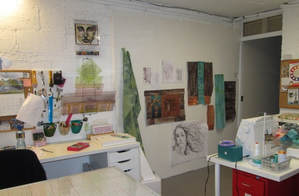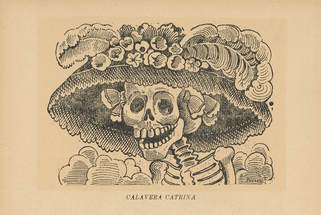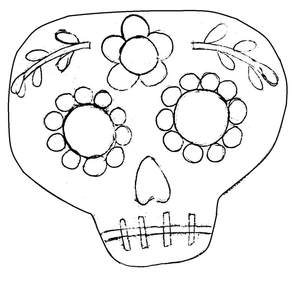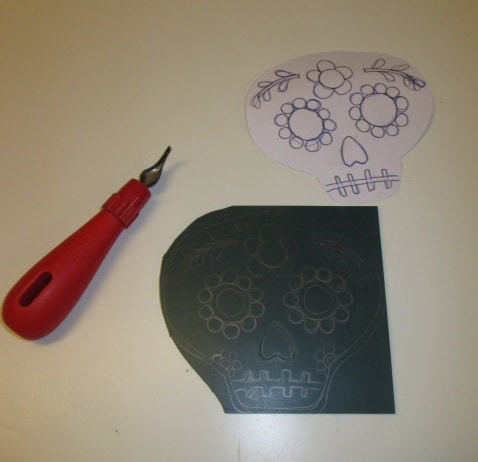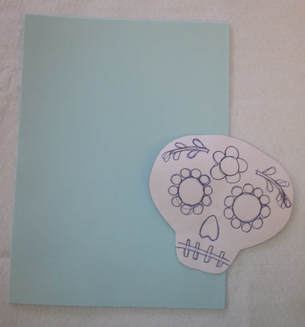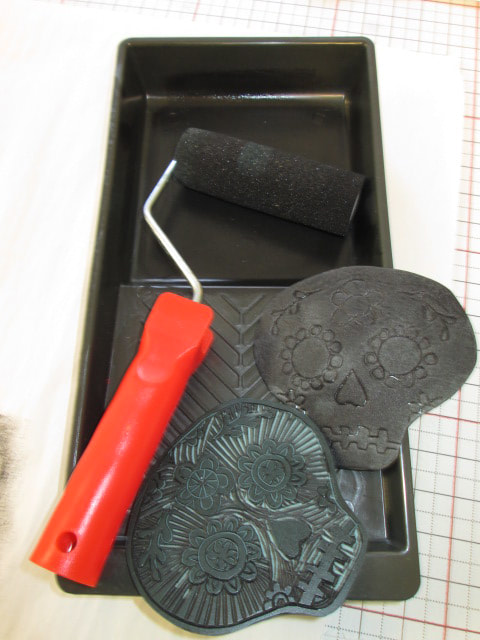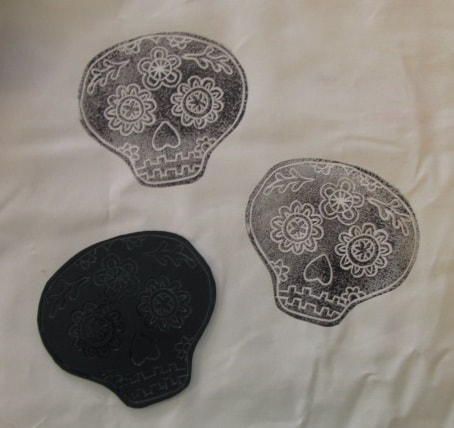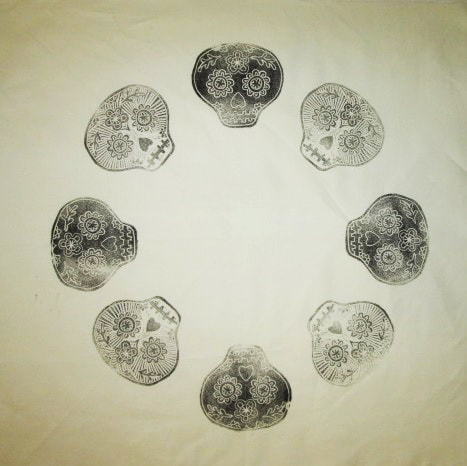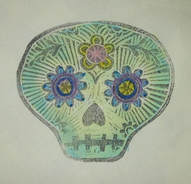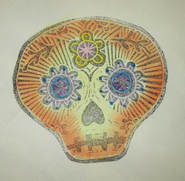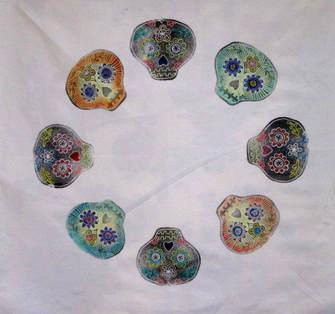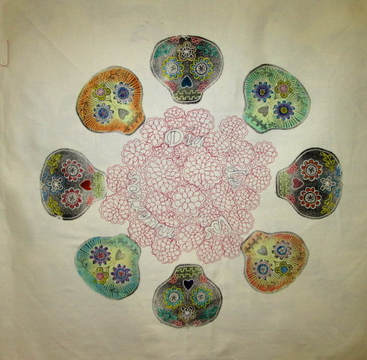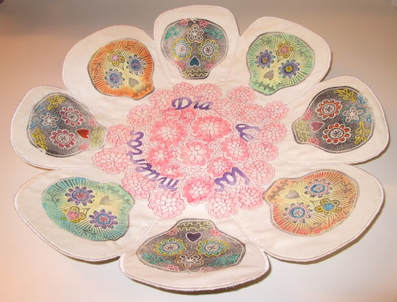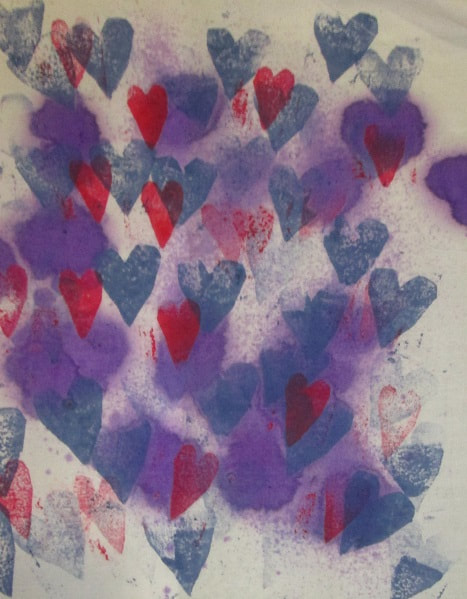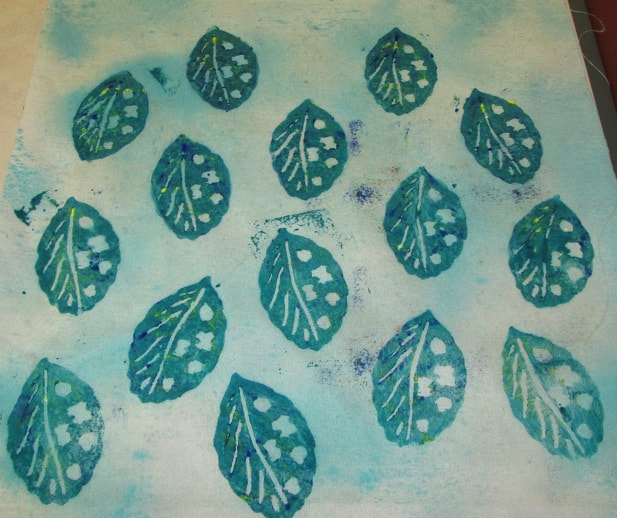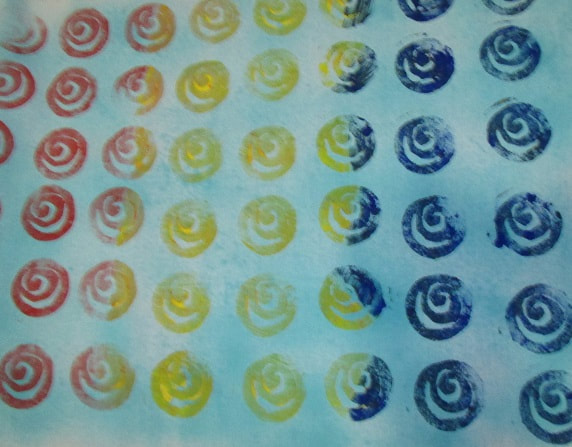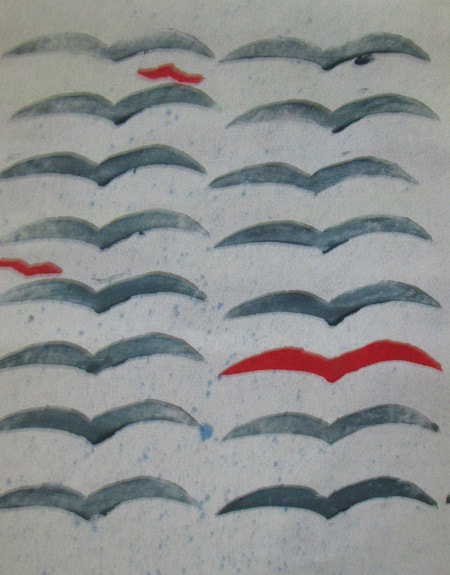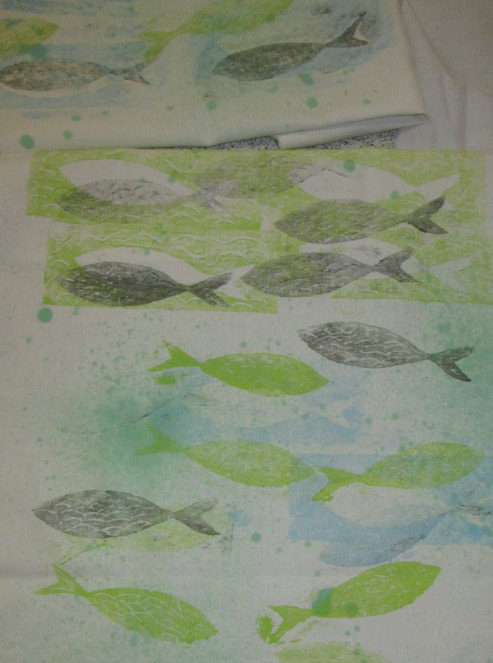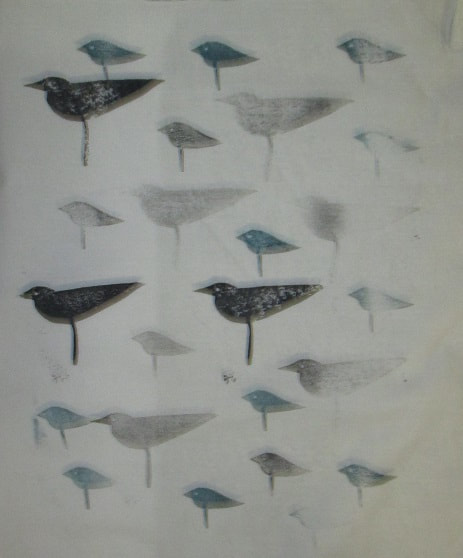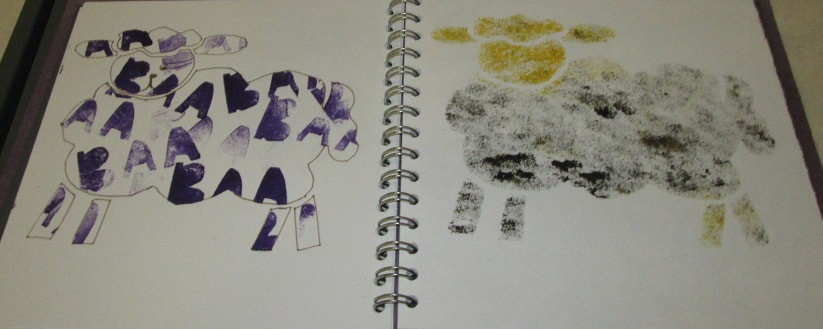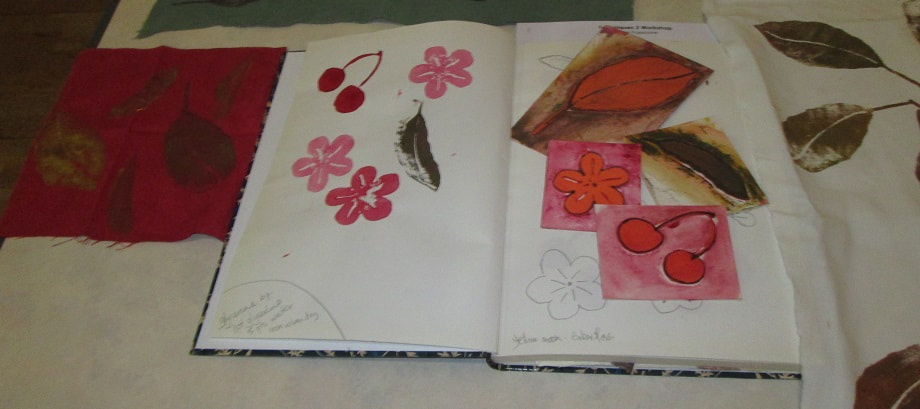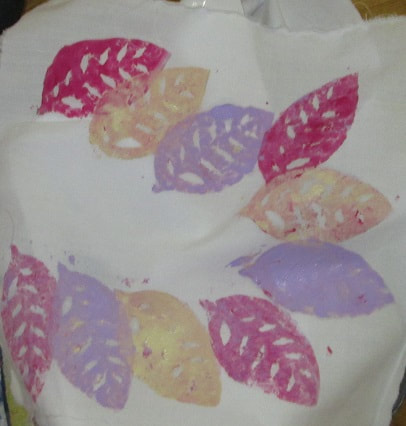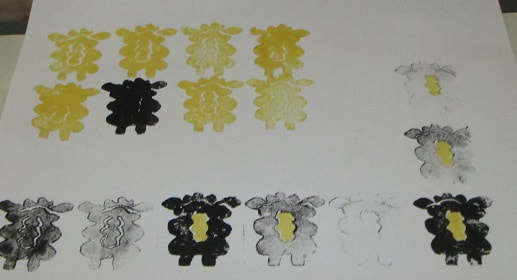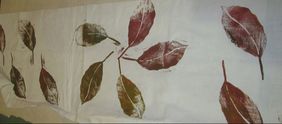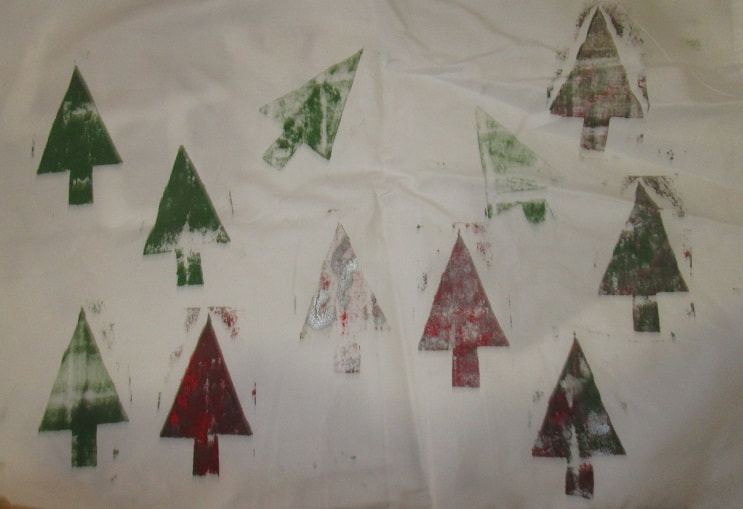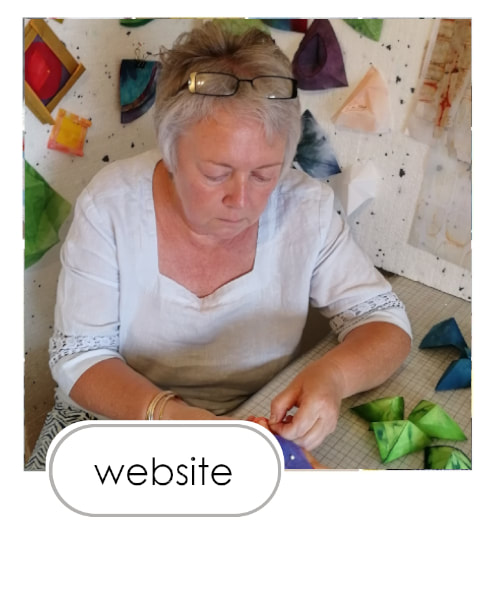|
After a long break from actually making anything I have finally got down to work. It isn't easy getting started again though. I have at least one large quilt that I want to make based on copper metal - more work for my Stitched Alchemy series which I am hoping to exhibit next year in the Contemporary Quilters West 'Unfolding Stories 3' exhibition (more on that in another post).
The fabric I have dyed isn't saying much to me at the moment, and despite lots of trials and stitching of different pieces together nothing much has worked.........yet. I have several ideas which I need to allow to develop and if I try to rush things it just isn't going to work. My design walls have lots of different fabrics pinned in all sorts of combinations and sketches and ideas are all over the place. The studio looks, quite frankly, a mess! So, although it feels a little like a diversionary activity today I decided to make something completely different. I think if I take time 'off' from the serious stuff it might just allow some space in my mind's eye for more ideas to develop, (well, I hope so). I was inspired by the ladies of Hardy Quilters with whom I spent a lovely day last week teaching my workshop Surface Design Techniques 2. We had a great day designing, creating and then using print blocks and when I arrived home I was in the mood to create something in the same way. I have added a selection of images at the end of this blog post so you can see some of the beautiful fabrics the ladies created on the day. As it is Halloween I decided to take that as my themeI've noticed that so called 'sugar skulls', more correctly called La Calavera Catrina, have become a popular image used in Halloween costumes and decorations. I did a little research and found out some interesting things about these unusual decorative skulls. Wikipedia tells me that La Calavera Catrina ('Dapper Skeleton' or 'Elegant Skull') is a 1910–1913 zinc etching by famous Mexican printmaker José Guadalupe Posada. The image depicts a female skeleton dressed only in a hat befitting the upper class outfit of a European of her time. Her chapeau en attende is related to European styles of the early 20th century. She is offered as a satirical portrait of those Mexican natives who, Posada felt, were aspiring to adopt European aristocratic traditions in the pre-revolution era. She, in particular, has become an icon of the Mexican Día de Muertos, or Day of the Dead. (Click here to visit the Wikipedia page) I thought I would make my own simple version of La Calavera Catrina to make some prints on fabric and then use the fabric to make something. I began by drawing a simple skull shape to use as a pattern.
Next, my favourite part - carving the lino block. I also made a second one using childrens' play foam. It is a very cheap and versatile product and makes great stamping blocks in minutes.
Once they were carved /cut I did a few test prints to make sure I liked the outcome. I used a foam roller and black acrylic paint mixed with a little fabric medium.
I printed a whole length of fabric with randomly placed skull shapes. I think I need to add a little colour to the remaining white fabric to make it more appealing.
I printed a second piece of fabric, this time in a more considered way. I alternated printing with the lino block and the foam stamp to add some variety. As I used acrylic paint it dried very quickly and I was soon able to add more colour with more acrylic paints.
This is how it looked just before I layered it up and quilted it. I layered it with a medium/heavy weight stiff interfacing and a layer of fabric on the back ready to turn into a bowl.
The quilting pattern I chose was a simple daisy flower motif - the same as the flower pattern on the lino block. I decided to only quilt the centre of the fabric and then outline quilt the skulls to hold the layers together.
And after adding a little more paint, this is how it finished up. It is more of a shallow dish/ plate than a bowl, but I think it looks very pretty!
And here is a selection from the work created in the workshop by the ladies of Hardy Quilters, one of whom was just 9 years old. Thanks ladies, I hope you create something great with your fabrics. Thanks for reading.
|
|
